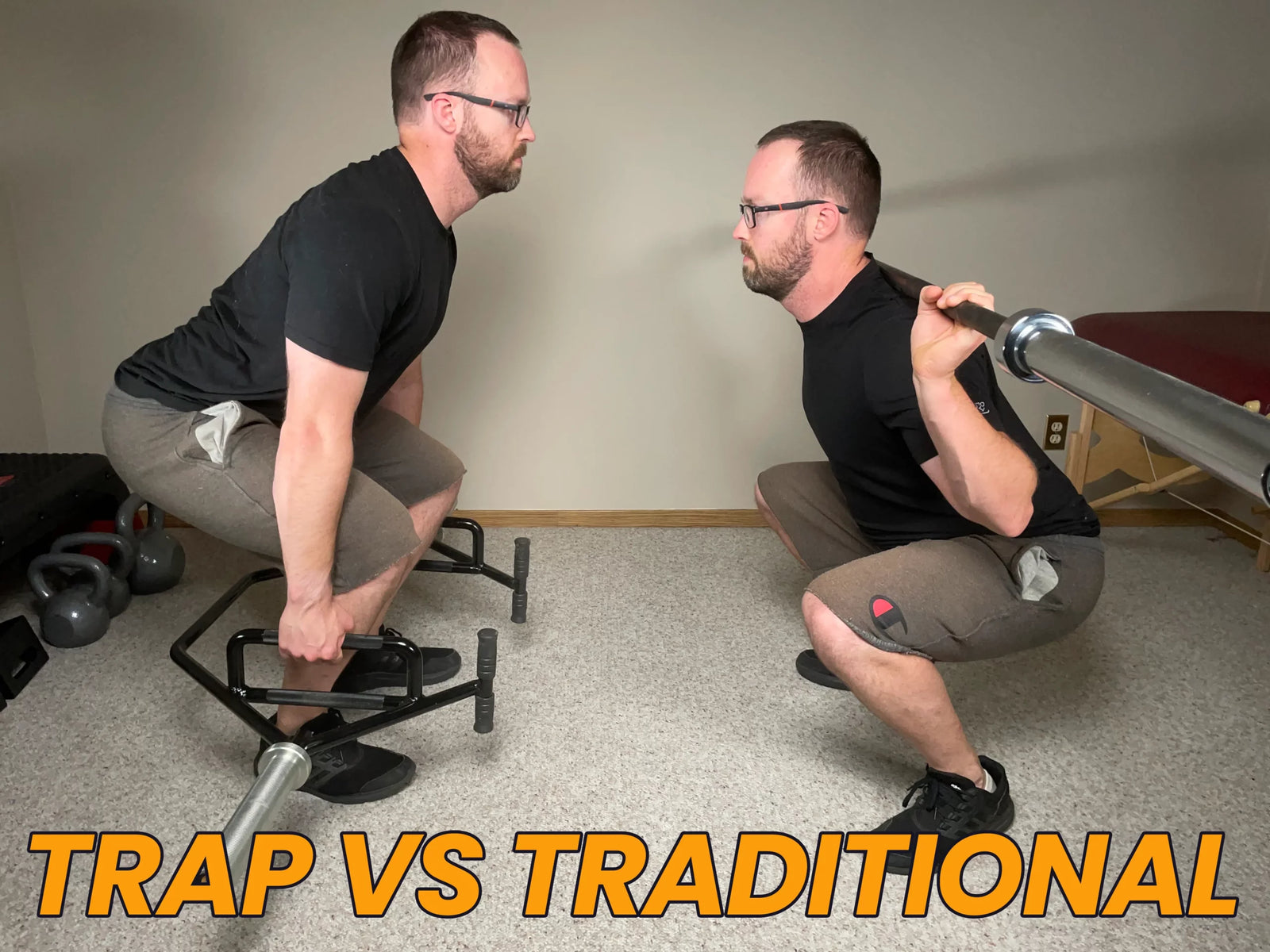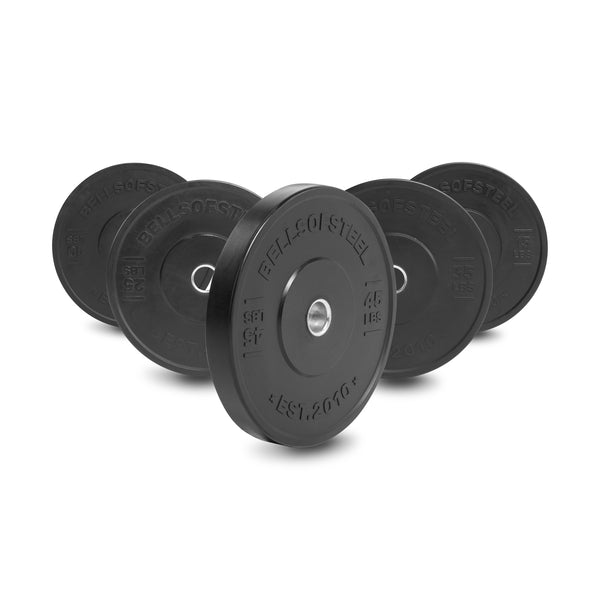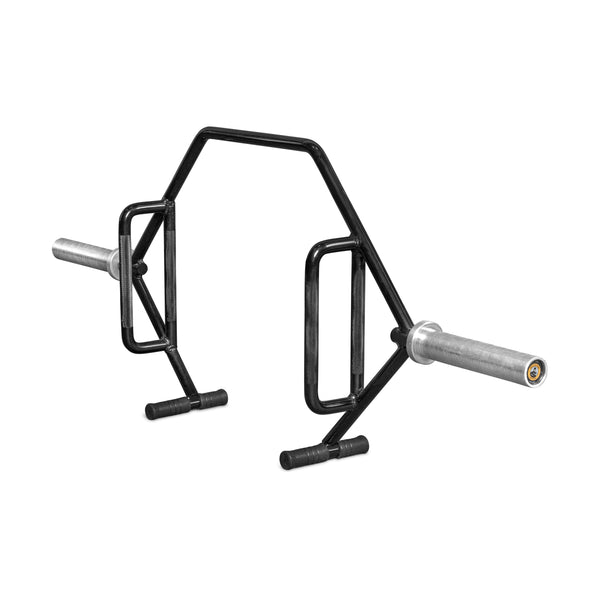In the world of strength training, few exercises can rival the benefits of barbell squats and deadlifts; each of these respective squatting and hinging-based movements are fundamental for anyone looking to build a bigger or stronger physique.
But if you’re picking weight up off the floor using a trap bar, does that count as squatting or deadlifting? The movements look quite similar, and as a result, many lifters are left wondering if trap bar deadlifts can replace squats. This article will help you discover the necessary information regarding the similarities and differences between barbell squats and trap bar deadlifts. By the end, you’ll know whether or not it’s a good idea to replace your squats with trap bar deadlifts.
Be sure to read all the way through, as you’ll then likely realize it’s not so much about one exercise being able to replace another but rather about knowing which one is best for you, based on your needs, abilities, and how you can utilize each one to your advantage. Here’s what you’ll learn in this article:
- The Similarities and differences of each exercise
- The Pros & cons of each exercise
- Which exercise is best for you
- Bells of Steel Open trap bar benefits
So, let’s stack each of these exercises side by side and start learning when you might want to prioritize one lift over the other. They may look rather similar, but there are some unique differences that exist between the trap bar deadlift and the traditional barbell squat!
It’s hard to know whether or not trap bar deadlifts or squats can (or should) be swapped for the other when you’re unaware of how they’re similar and how they’re different. Once you’re aware of these factors, the decision becomes much easier to make. What follows are the basics that you’ll want to be aware of:
Notable similarities:
- Both the barbell back squat and the trap bar deadlift require a lifter to move the weight vertically against the effects of gravity, raising it perpendicular to the floor.
- Both the barbell squat and trap bar deadlift are compound movements, meaning each exercise works multiple muscle groups throughout the movement. These include muscle groups such as the gluteals (hips), the quadriceps and hamstrings (the thighs) and the spinal erectors (low back muscles).
- Both exercises have a similar center of gravity, where the weight of the barbell and plates is centred directly through the spine and is thus directly beneath the lifter’s feet. The vertical location of the barbell doesn’t matter in this context (i.e., resting on a back or holding it by your thighs), as the center of mass is near identical.
- Both are primarily lower body dominant exercises. Other smaller muscle groups are worked with each respective exercise, but each exercise is performed with a focus on the muscles of the lower body.
Notable differences include:
- Potentially less range of motion with trap bar deadlifts since any plates on the trap bar will potentially contact the floor. If you squat shallow (i.e., do smaller squats) when barbell squatting, you might not notice this. However, if you’re used to performing deeper squats, you’ll likely notice a smaller available range of motion when using the trap bar.
- Less upper body mobility is required for trap bar deadlifts since the arms are held directly to the side. (Barbell back squats require a greater range of shoulder abduction and external rotation.) You’ll want to take note of this if you have shoulders that are limited in their mobility, if you’ve recently injured your shoulder, etc.
Like anything else in life, traditional barbell squats and trap bar deadlifts each have their own unique pros and cons. What’s critical to keep in mind here is that these pros and cons are not universal; what might be a benefit for one lifter might be a drawback for another.
As such, don’t make the mistake of thinking one exercise is right or wrong to perform. Instead, get in the mindset of asking yourself which exercise is best for YOU and your needs or abilities. Let’s look at these pros and cons in a bit more detail!
Trap bar deadlifts pros:
- Trap bar deadlifts are less technical to perform than barbell squats, making them more ideal for beginners or those who may lack confidence with their exercise technique. You won’t need to worry about having a spotter, either.
- Trap bar deadlifts also work the forearms (grip strength) and upper back (traps) since the lifter must hold onto the weight instead of resting on the upper back.
- No rack, cage, or stands are required. With the trap bar, you simply load it up and then pick it up! The bar doesn’t need to rest on any equipment. You can’t say the same for barbell squats.
Trap bar deadlift cons:
- The trap bar tends to offer less full-body versatility than a traditional barbell. While the trap bar can indeed be utilized for numerous exercises, a traditional barbell can be utilized for an exceedingly higher number, especially for the upper body. (This doesn’t directly pertain to the comparison of squats and trap bar deadlifts, but it’s still worth mentioning).
- You may be limited more by your grip strength than your leg strength if you’re lifting heavy weight. This can be a substantial drawback for those who want to focus solely on lower body strength.
Traditional barbell squat pros:
- Traditional barbell squats offer a higher degree of core strengthening due to the weight resting across the back, making for more of a top-heavy load. The result is greater recruitment of muscles around the spine and torso to help control the load.
- The traditional squat is a prerequisite for more advanced barbell exercises. If you want to learn how to perform more complex exercises, such as cleans and snatches (known as the Olympic lifts), you’ll first need to master the squat. As such, opting to perform barbell squats over trap bar deadlifts affords more time and effort to hone in on this prerequisite movement.
- You can opt to perform back squats or front squats. While front squats are quite similar to back squats, they also have some unique differences (which are beyond the scope of this article).
Traditional barbell squat cons:
- Require a higher degree of coordination, leading to safety considerations for novice lifters or those working out alone.
- Can’t be performed with just the barbell. As mentioned in the “pro” section of the trap bar deadlift, you will need a squat rack, cage, squat stands, etc., if you want to perform this exercise.
- Maybe more irritating or painful on the lower back if you have a history of lower back pain or injury (however, this is not an absolute).
- Both exercises build amazing strength and physique; either one can improve your overall physical performance and appearance.
- Work with what you have. If you only have access to a traditional barbell and a squat rack, you can make do with this for quite some time.
- If you’re injury-prone, new to strength training, or tight on space, a trap bar is likely the way to go if you could only pick one bar for lower body strength training.
The Bells of Steel Open Trap bar has been a critical piece of equipment in my home gym setup. Whenever someone is in the market for a trap bar, I always advocate for it to be an open trap bar (as opposed to one with a closed hexagonal shape).
The open concept provides vastly increased exercise versatility far beyond what can be done with a traditional closed trap bar. Additionally, any exercise you can do with a closed trap bar can be done with an open design.
The Bells of Steel Open Trap Bar offers an unbeatable bang for your buck. Not only does it come in at a fraction of the cost of other open trap bars, but it comes in at a fraction of the size, making it a perfect option for those who are perhaps building a home gym with limited floor space.
As a BOS open trap bar owner, I can say that its knurling gets the job done for heavy lifts, and the rotating sleeves make farmer’s carries and similar exercises much smoother and more enjoyable to perform. It’s also the trap bar that I have my patients and clients lift out of, be it for injury rehabilitation or performance-based training.
Now that you know the basics between these two powerhouse exercises and which one may be best for your needs or abilities, go lift some weight! Whether it’s with a barbell or a trap bar, you’ll make good things happen, and your muscles, bones, and joints will thank you.



